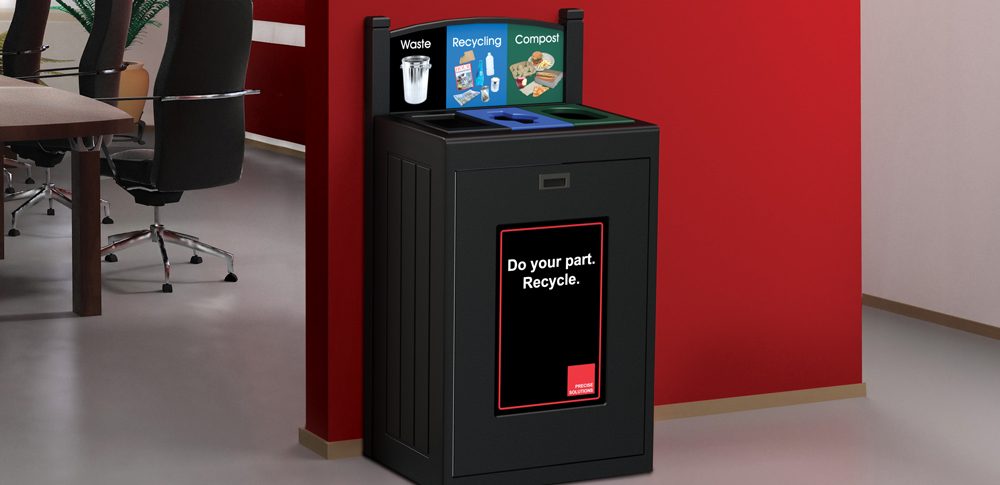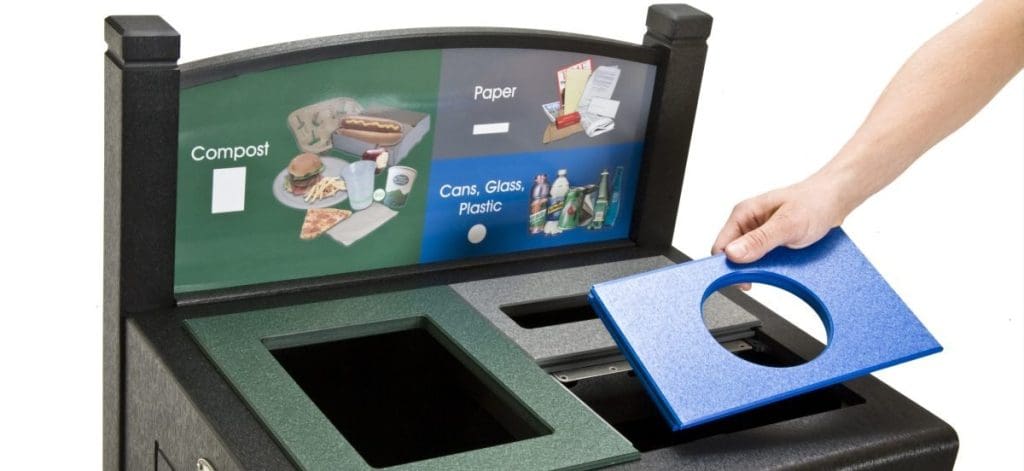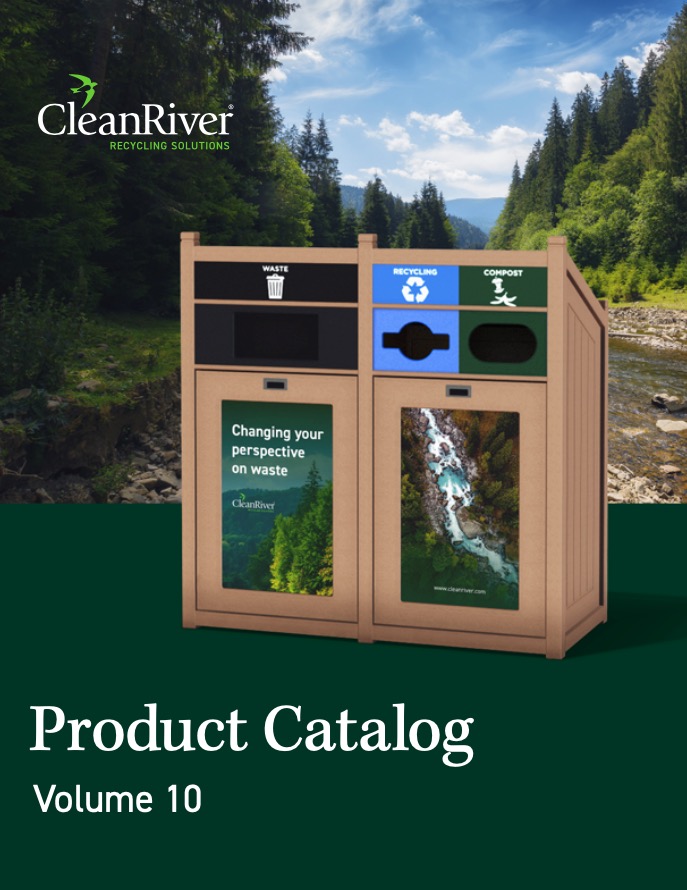Share
The Paperless Project states the average office worker uses 10,000 sheets of paper a year, and 45% of paper used by office workers is trash by the end of the day. CalRecycle reports that over 785,000 tons of recyclable office paper are disposed of every year in California alone.
The good news is that there’s a huge opportunity for offices to make an impact on the amount of waste they divert from landfill through recycling paper alone.
Here’s 10 tips to help you set up a successful office recycling program: |
|---|
1. Set up a green team
Implementing a recycling program can be a daunting task for just one person. Recruit team members from different departments so you get everyone’s perspective on what a successful office recycling program looks like to them.

2. Determine the volume of waste you generate
This can easily be done with a visual waste audit. Work with your custodial team to collect all the garbage over a 3-day period. Weigh the waste so you can determine the volume generated by your office building in a typical week. Use a visual waste audit to determine the percentage of waste that’s recyclable or compostable.
[big_cta image=”http://cleanriver.com/content/uploads/2015/02/ebook.jpg” href=”https://go.cleanriver.com/l/584393/2018-11-08/3w51n/” multiline=”1″]Facility Manager’s Must-have Guide ( Free Download)A How-To Guide for Waste Audit Success[/big_cta]
3. Identify what to collect
Talk to your waste hauler or review your contract to see what recyclable items they collect, this varies by region. Some municipalities require you to separate out your recyclables at source (multi-stream recycling) and others allow you to collect all your recyclables together (single stream recycling or commingled recycling).
Use the data from your waste audit to identify which recyclable items are typically found in your waste. This will normally be paper, and cans and bottles. Some regions in Canada and the US have bottle return programs so you can make money from the recyclables you collect. This can be used to fund the expansion of your business recycling program, or for other sustainability initiatives.
4. Involve your janitorial team
It’s critical to have custodial/janitorial team buy-in. If they don’t see the value and importance of your program, or understand how it works, they can unintentionally ruin your program by collecting trash and recycling together.
Involving the janitorial team at the design stage can also help you implement a more effective program as they have insight into user behavior that you might not be aware of. Black and McDonald involved their custodial team in their office recycling program design and achieved a diversion rate of over 90%!
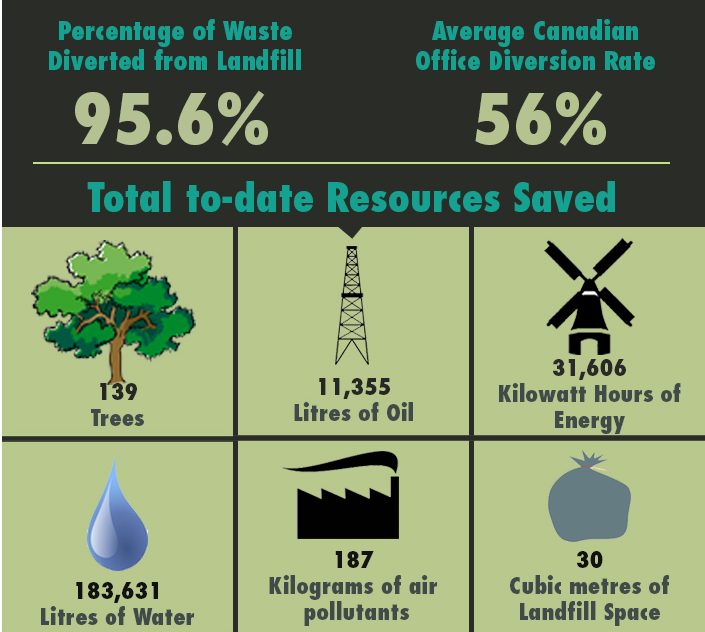
5. Determine the traffic flow
Optimal bin placement will significantly affect whether people use the new bins effectively. Determine the traffic flow in your office and the most likely areas for waste generation, for example, meeting rooms, communal areas and lunchrooms.
6. Consider centralized recycling
These programs provide employees with a small deskside recycling bin and Mini Bin. The employees take their recycling and waste to a central station and sort the waste themselves.
Centralized recycling encourages employees to be accountable for the waste they generate. These programs are effective at reducing stream contamination and increasing diversion rates. The Toronto Transit Commission (TTC) achieved a 70% diversion rate across their office locations by implementing centralized recycling.
7. Select the right recycling bins
Choose bins that collect all your streams in one container. If you use one bin for each stream (one for recycling, and one for landfill waste) they will become separated and then people will just use the nearest bin not the right one.
It’s a good idea to use bins that grow with your program. Ones that allow you to change the recycling labels and the volume of streams you’re collecting.
[video_wrap][/video_wrap]
8. Use images on recycling graphics
This significantly reduces your stream contamination and increases your diversion rates. A University of Toronto study discovered that including facility-specific waste images increased their diversion rate 164%.
 |
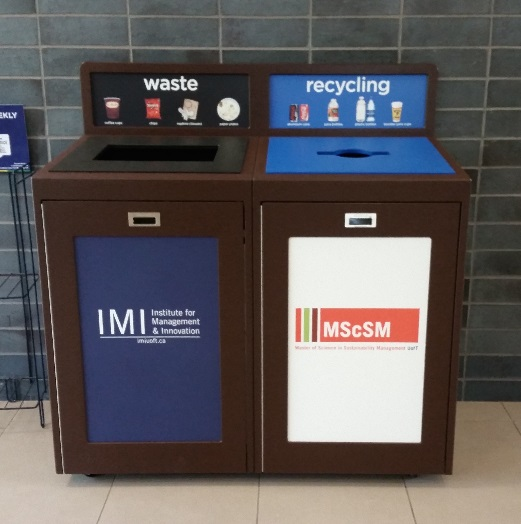 |
| Recycling bin with text only graphics | Recycling bin with facility-specific waste images and text |
9. Launch your office recycling program!
Communication is a key contributor to recycling program success. Everyone needs to know where the recycling bins are, what you’re collecting and what your goals are.
Put posters or signs by the recycling bins to remind everyone of the goals each time they use them. CleanRiver clients who hold regular meetings to talk about the program and share the results with their team see significant improvement in recycling program engagement and diversion rates.
10. Continual Improvement
Check in regularly with your janitorial team on how the program is working from their perspective. Are they having challenges with people not sorting their recycling effectively? Do you need to tweak the capacity of certain streams? If you’ve selected flexible bins that allow you to increase or decrease the volume of streams you’ll be able to adapt your program as it develops.
Conduct regular waste audits (we do them quarterly at CleanRiver) and update your recycling graphics to address any frequent offenders – items that are being tossed in the trash that should be recycled.
If you’d like more information on how to set up an office recycling program please call us at 1-888-646-4246 or email solutions@cleanriver.com.
The CleanRiver Book of Recycling Graphics |
|---|

